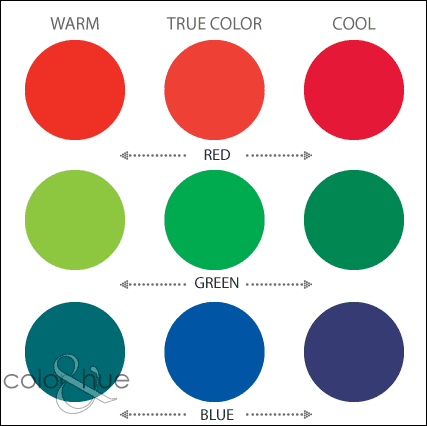Perhaps you or someone you know has said, “I can’t wear red” or “I don’t like the color purple.” With most anything, these are broad generalizations in the world of color as there are hundreds of different reds and purples…and blues and greens. (If you’ve ever seen a paint deck, you get the idea.)
One characteristic of color is relative color temperature — where color is identified as either warm or cool against a standard.
How Color Temperature Affects what looks good on you

In the chart above, I show the truest forms of red, green and blue down the middle column. Then, I added yellow to warm them up (as shown in the left column) and blue to cool them down (as seen on the right.)
There is a subtle, but distinct difference — especially when it comes to the clothes we wear.
You probably have a preference and based on what I’ve discovered in my work is that we tend to gravitate to the temperature that is dominant in our personal coloring.
That has a big impact on your life because it can make shopping for yourself and others that much easier.
Does it matter if you wear the right temperature for your coloring?
YES!
You can always fudge a little bit when it comes to color but when it comes to creating your core wardrobe (aka the building blocks of your wardrobe), then you want to go with your dominant color temperature.
Everyone has warm and cool in their coloring…but you want to play off the dominant temperature when selecting your basics. Take a look at the slides below and you can see the subtle differences when they wear the correct temperature neutral with the incorrect. Neutrals are not as exciting as color so the differences are quite subtle.
Before & Afters: Wearing the right neutrals
Once you start adding your right colors, then your whole wardrobe comes together and works effortlessly with your perfect neutrals.


